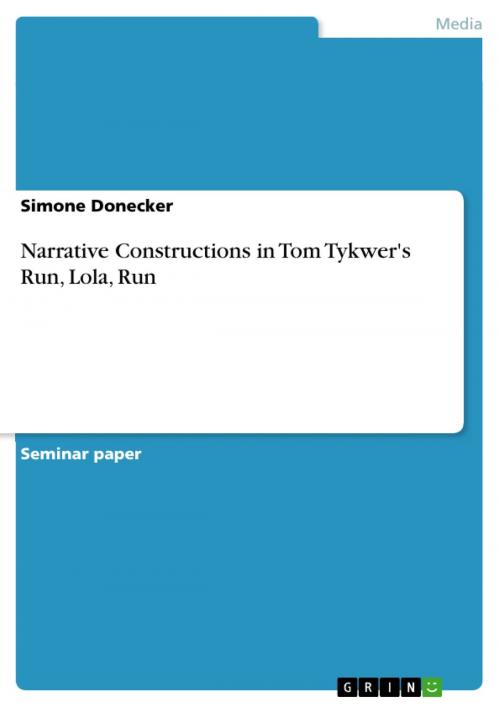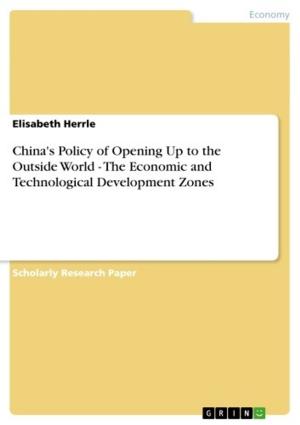Narrative Constructions in Tom Tykwer's Run, Lola, Run
Nonfiction, Entertainment, Performing Arts, Film| Author: | Simone Donecker | ISBN: | 9783638548076 |
| Publisher: | GRIN Publishing | Publication: | September 24, 2006 |
| Imprint: | GRIN Publishing | Language: | English |
| Author: | Simone Donecker |
| ISBN: | 9783638548076 |
| Publisher: | GRIN Publishing |
| Publication: | September 24, 2006 |
| Imprint: | GRIN Publishing |
| Language: | English |
Seminar paper from the year 2005 in the subject Film Science, grade: A*, Indiana University (Communication and Culture), 6 entries in the bibliography, language: English, abstract: Run, Lola, Run by Tom Tykwer (1998) is a cinematically innovative film that departs in many ways from usual standards of narrative construction by using a wide range of filmmaking techniques. Although its unique graphic and audio representation as well as its plot technique confronts stereotypes that are produced by Hollywood, it can also be associated with principles of classical narrative form. In this paper I will discuss the complex structure and narrative of the movie as well as its extensive self-reflexivity by focusing on its different ramifications in art cinema, counter-cinema and classical Hollywood cinema. In an interview on a Belgian film website David Bordwell argues that a lot of films which seem to be unusual and innovative are actually rooted in the spirit of classical cinema: A movie like Lola Rennt for instance, which is very experimental in some ways, is in many ways also very traditional. Beginning-middle-end, she gets three chances, the last one is the right one, she looks at the audience in the end and acknowledges it's all been a game... I mean, this is very much in the spirit of classical cinema. Although this might be true, there certainly are devices in the film that can be aligned with art cinema. The categorization and analysis of Run, Lola, Run is a matter of how you define classical Hollywood cinema and of how much emphasis you put on the different characteristics that define the structure and the narrative of the film. [...]
Seminar paper from the year 2005 in the subject Film Science, grade: A*, Indiana University (Communication and Culture), 6 entries in the bibliography, language: English, abstract: Run, Lola, Run by Tom Tykwer (1998) is a cinematically innovative film that departs in many ways from usual standards of narrative construction by using a wide range of filmmaking techniques. Although its unique graphic and audio representation as well as its plot technique confronts stereotypes that are produced by Hollywood, it can also be associated with principles of classical narrative form. In this paper I will discuss the complex structure and narrative of the movie as well as its extensive self-reflexivity by focusing on its different ramifications in art cinema, counter-cinema and classical Hollywood cinema. In an interview on a Belgian film website David Bordwell argues that a lot of films which seem to be unusual and innovative are actually rooted in the spirit of classical cinema: A movie like Lola Rennt for instance, which is very experimental in some ways, is in many ways also very traditional. Beginning-middle-end, she gets three chances, the last one is the right one, she looks at the audience in the end and acknowledges it's all been a game... I mean, this is very much in the spirit of classical cinema. Although this might be true, there certainly are devices in the film that can be aligned with art cinema. The categorization and analysis of Run, Lola, Run is a matter of how you define classical Hollywood cinema and of how much emphasis you put on the different characteristics that define the structure and the narrative of the film. [...]















